Tucked into the slopes of Tieu Mountain in Tuong Giang Ward, Tu Son City, Bac Ninh Province, Tieu Pagoda exudes a serene, ancient charm with mossy stone towers, centuries-old trees, and tranquil pathways.
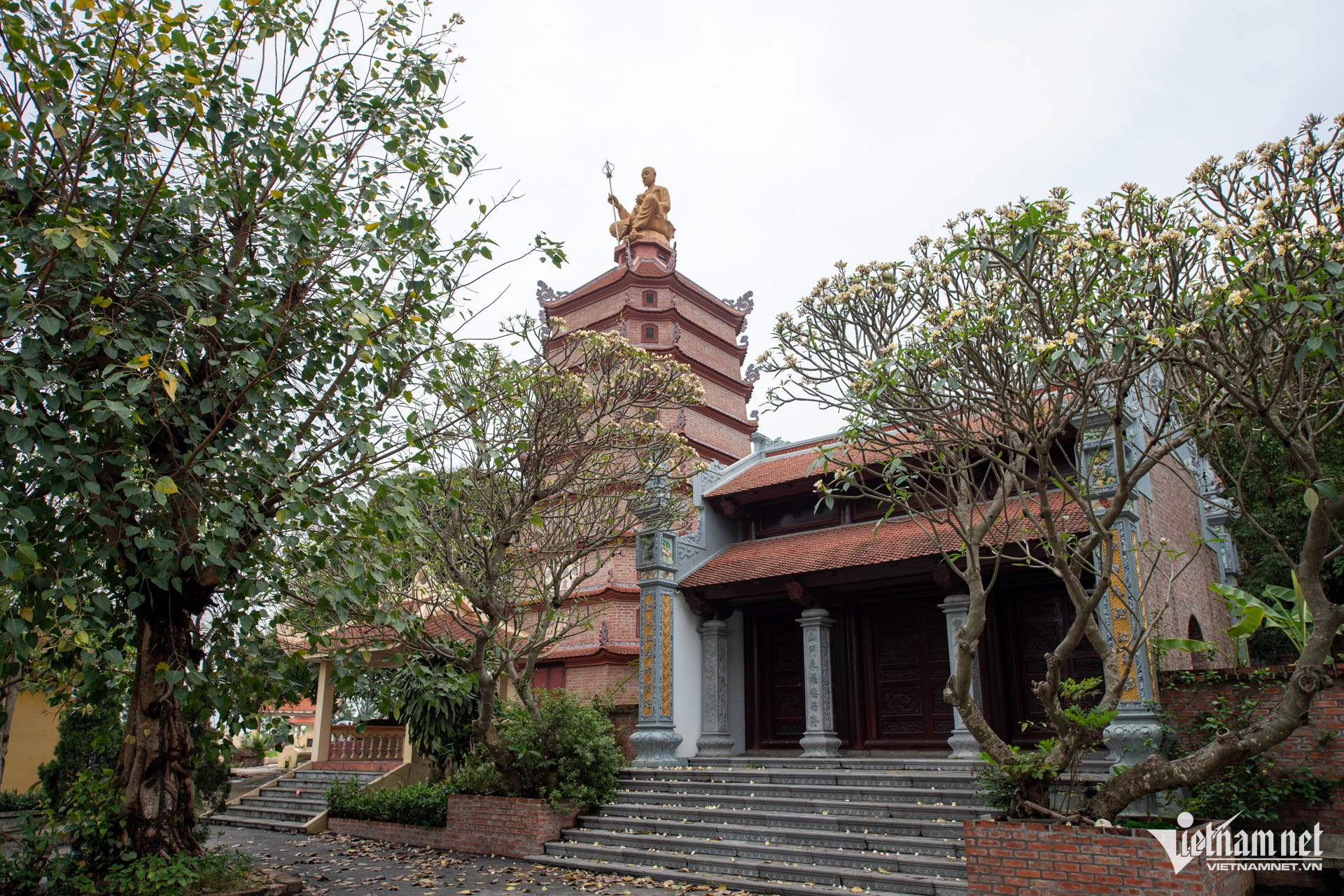
Tieu Pagoda was once a major Buddhist center.
Also known as Thien Tam Tu or Tieu Son Tu, this thousand-year-old pagoda is steeped in history and legend, particularly tied to Zen master Van Hanh and King Ly Cong Uan.
It is most famous for housing the incorrupt body of Zen master Nhu Tri - a rare preserved full-body relic that has endured for nearly 300 years.
A thousand-year-old sanctuary
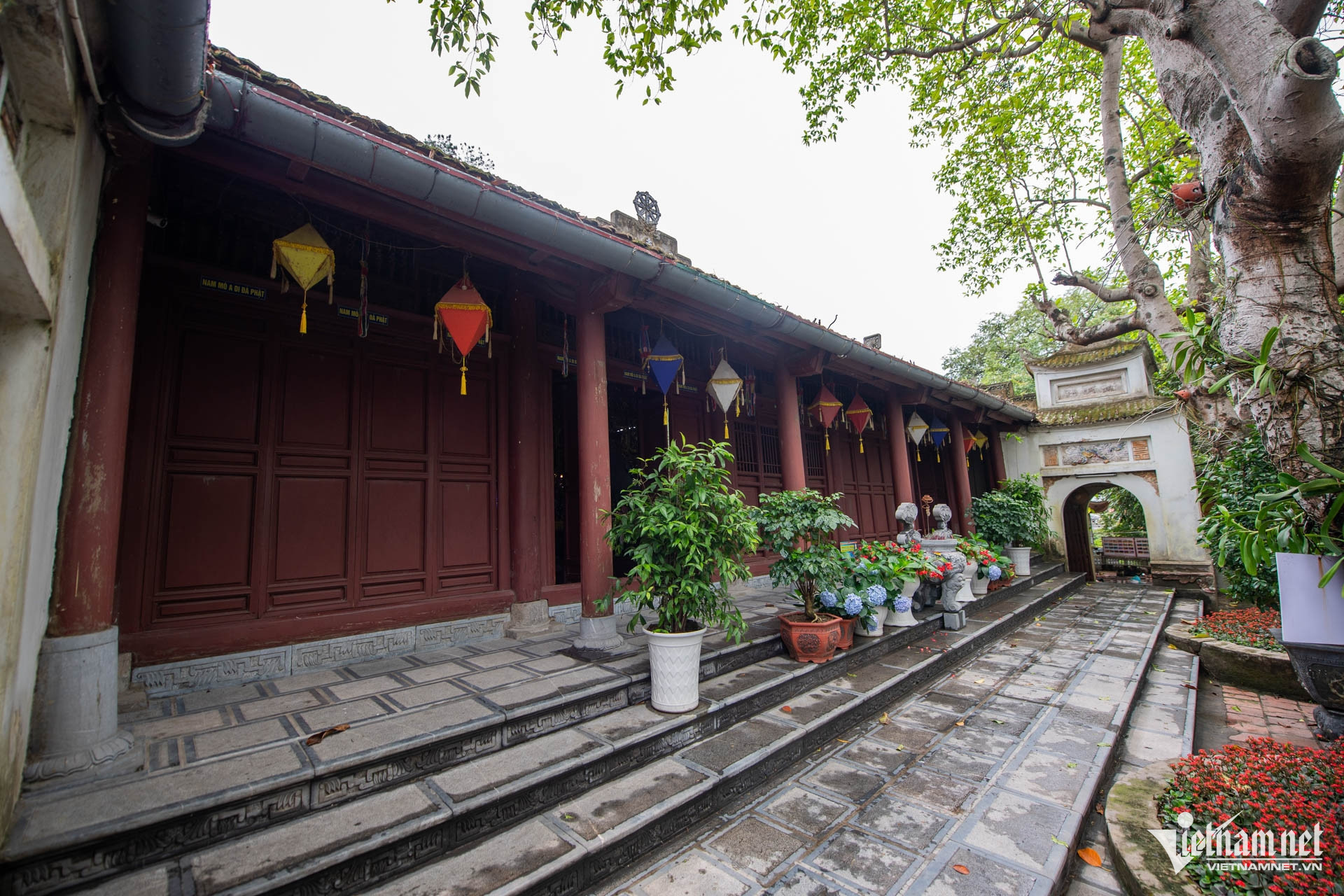
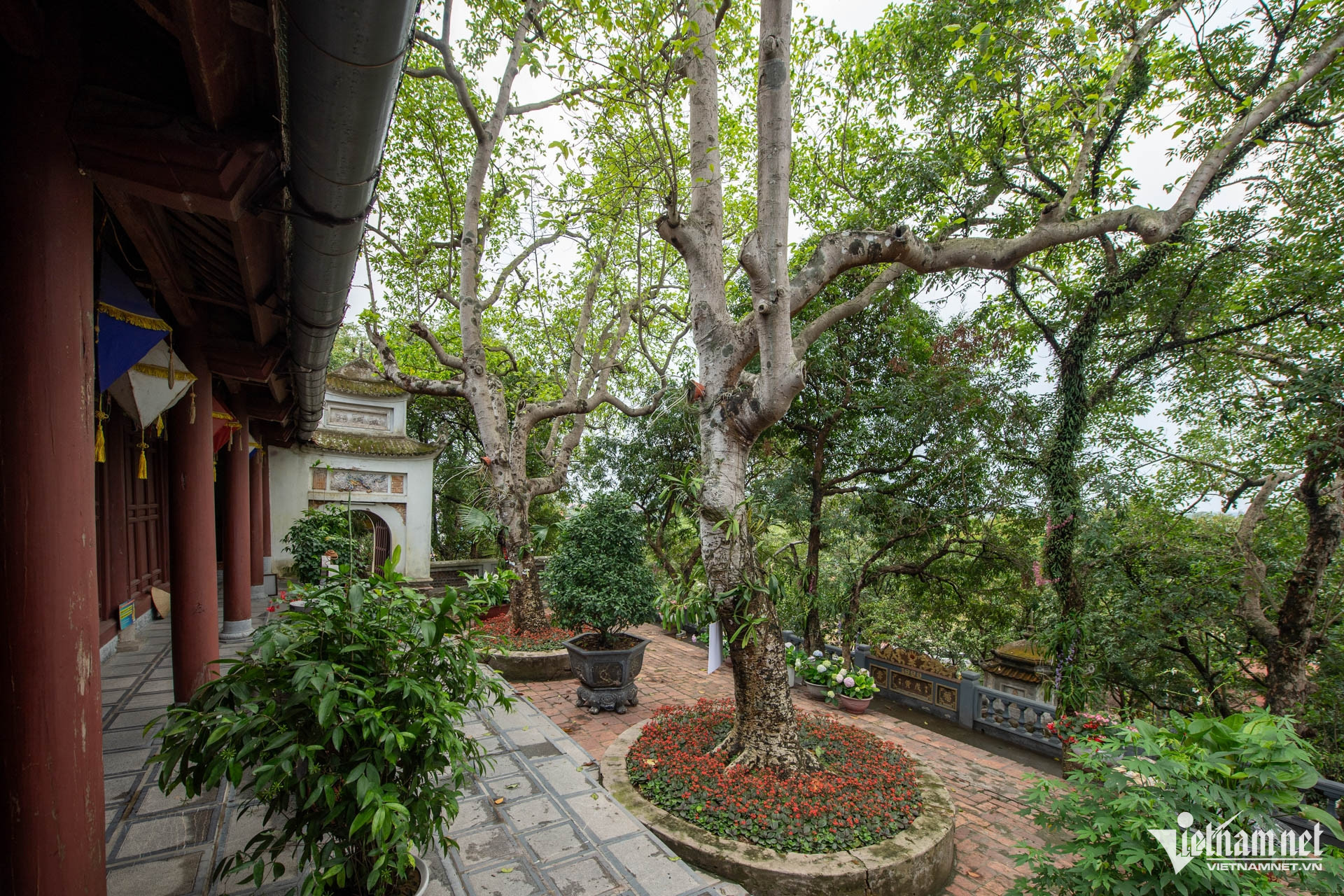
According to the historical record Lich trieu hien chuong loai chi by Phan Huy Chu, Tieu Pagoda is the place where Zen master Van Hanh resided and where Ly Thai To (King Ly Cong Uan) is said to have reincarnated.
The pagoda is believed to have been his place of upbringing under Van Hanh’s guidance, shaping him into the founder of the Ly Dynasty and a builder of Dai Viet civilization.
The pagoda dates back to the pre-Ly period and was once a major Buddhist center. During the Ly Dynasty, it included both the mountain-based Thien Tam Pagoda - where monks practiced - and Truong Lieu Pagoda at the base, where they resided.
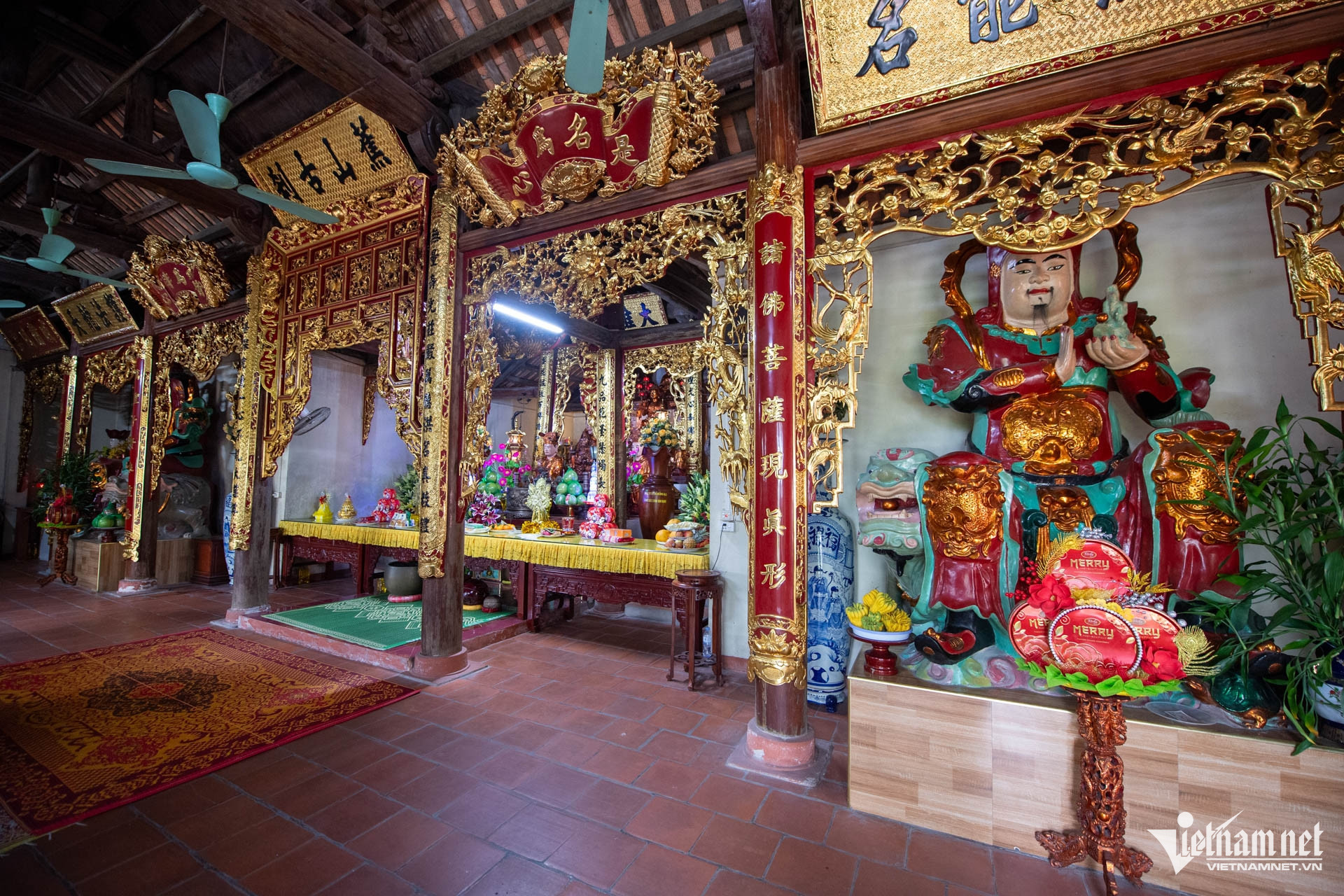
The Main Hall reflects traditional architecture with carved ironwood.
It was extensively renovated during the Le Trung Hung period with the addition of Cam Tuyen Hall, Tien Linh Pavilion, and the Upper Hall. The Nguyen Dynasty, under Emperor Bao Dai, also carried out restorations. However, the pagoda suffered significant destruction during the French resistance war.
“I came here in 1967 and found the pagoda in ruins. The worship hall was gone,” recalled 97-year-old abbess Thich Dam Chinh.
Thanks to multiple restorations - most recently in the late 20th and early 21st centuries - and her dedication, the pagoda was revived into the peaceful site it is today.
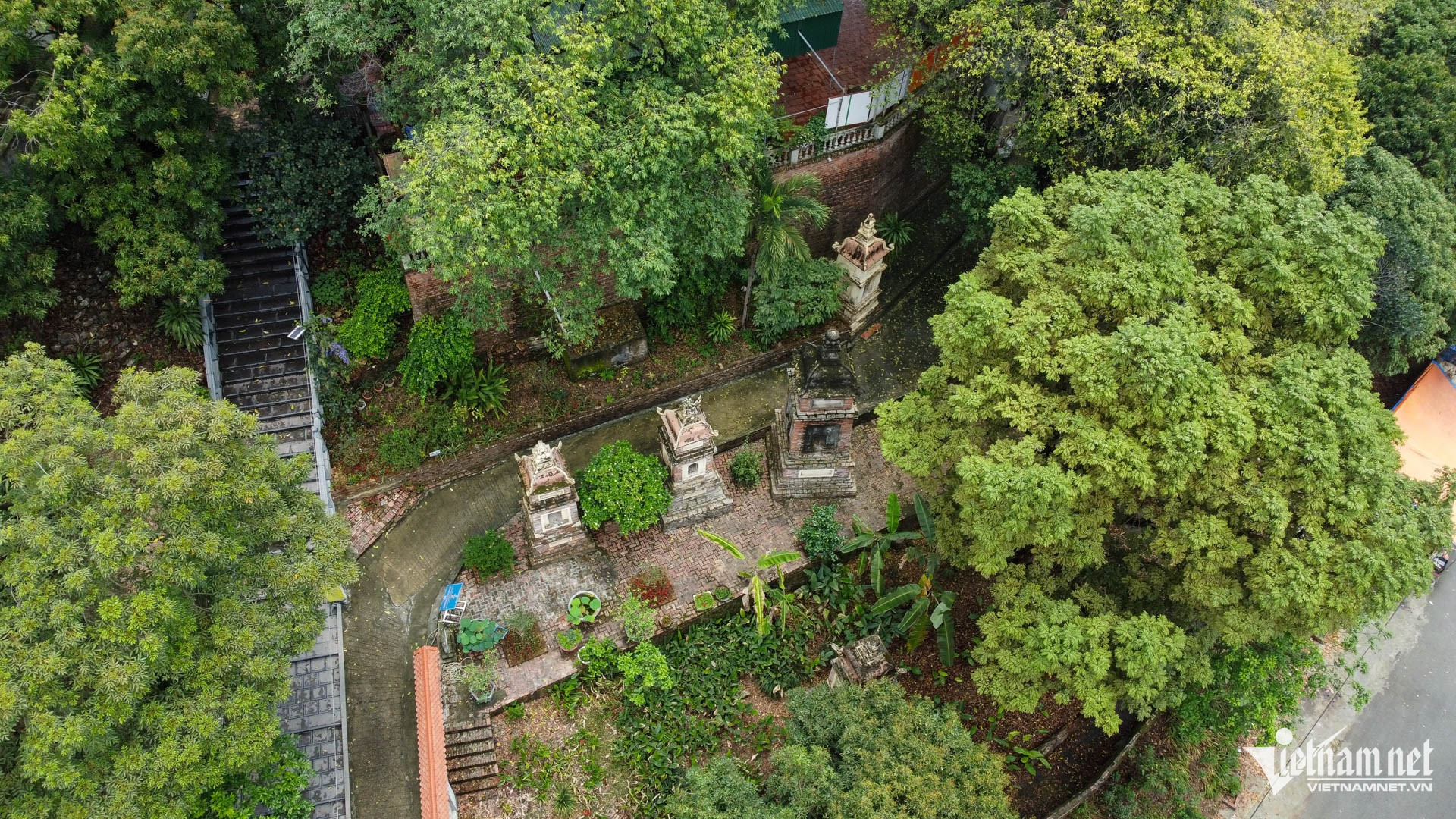
Ancient stupas lie under the shade of towering trees.
Its main hall, built using the traditional ke truyen truss structure and carved from ironwood, stands amid ancient trees. Two towering white champaca trees bloom fragrant flowers each spring.
Tieu Pagoda’s architecture blends Ly Dynasty Buddhist aesthetics with the quiet Zen spirit of Kinh Bac. Its layout includes the main hall, ancestral house, guest quarters, bell tower, stupa garden, and auxiliary structures.
No donation box is placed here. Abbess Dam Chinh insists that nuns remind visitors not to leave money on statues or altars, preserving the site’s solemn and pure atmosphere.
Recognized as a National Historic-Cultural Site in 1991, the pagoda remains a spiritual refuge and historical treasure.
Sacred relics of Tieu Pagoda
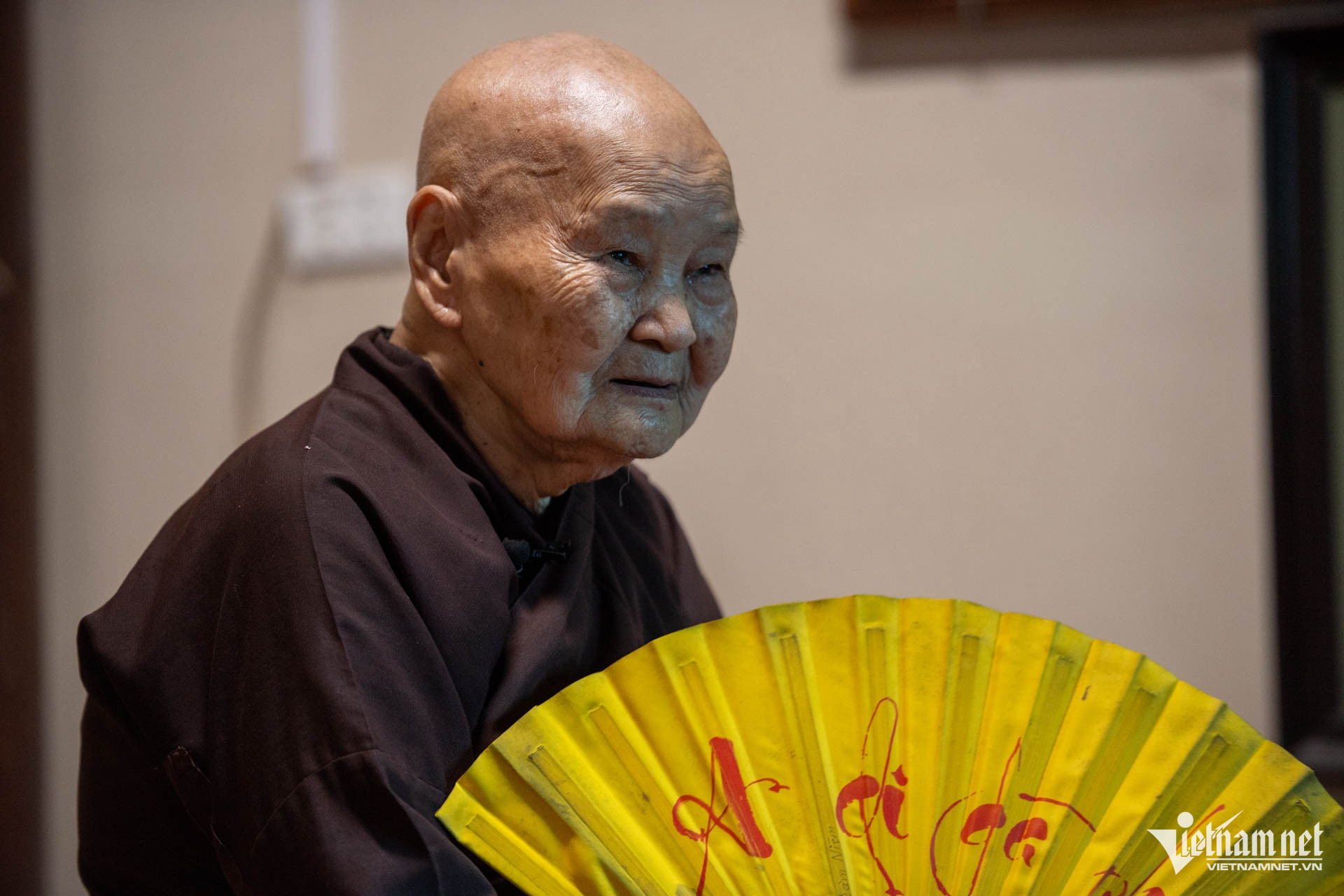
Abbess Thich Dam Chinh, who restored and preserves the pagoda.
In the ancestral house stands a solid bronze statue of Zen master Van Hanh, seated in meditation on a lotus. His face is gentle yet dignified.
Abbess Dam Chinh recalled learning its identity only in 1970, when historian Tran Quoc Vuong visited and provided crucial historical insights.
Van Hanh (938–1018) was a towering figure in Vietnamese Buddhism and a close advisor to the Le and Ly dynasties.
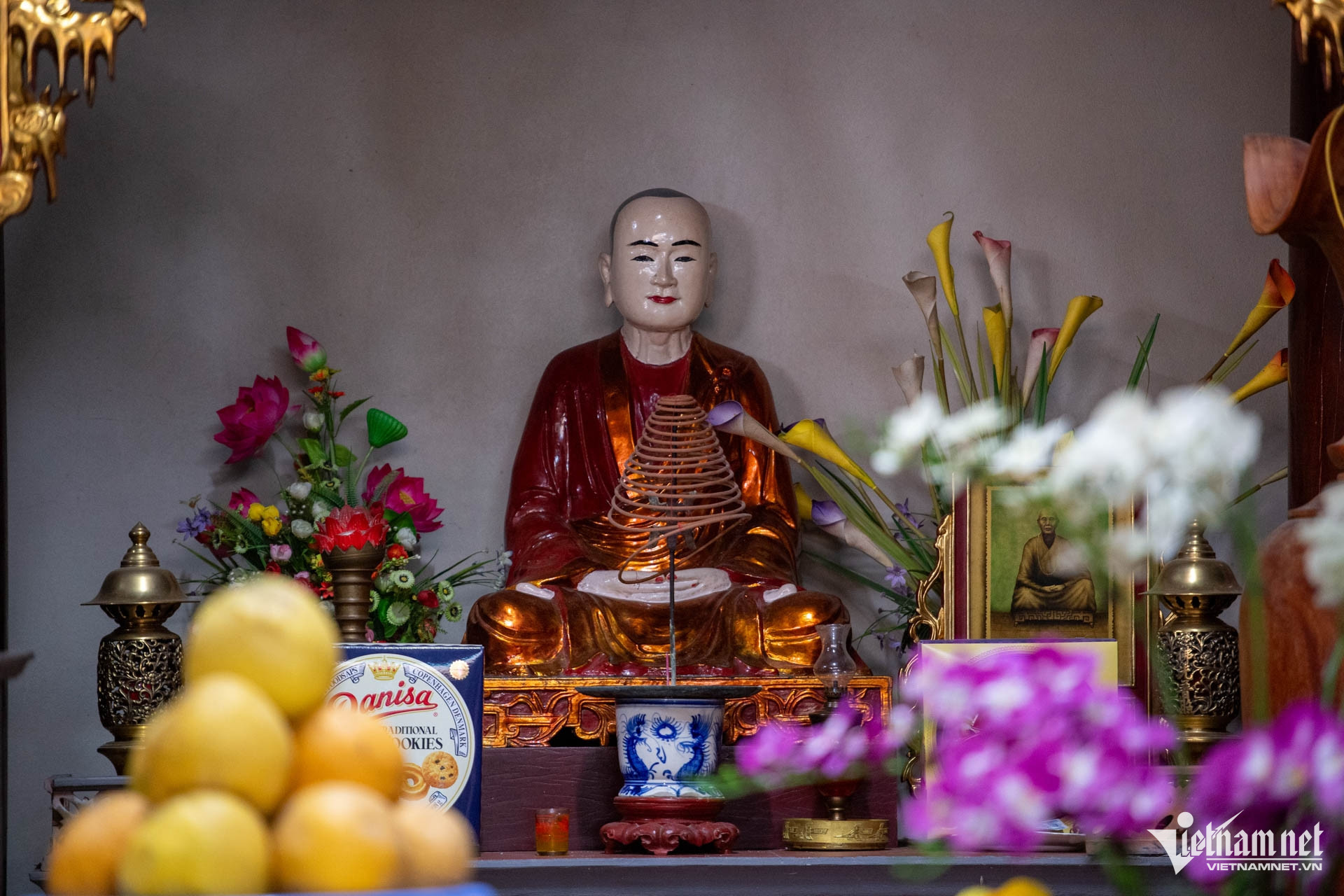
The bronze statue of Zen master Van Hanh.
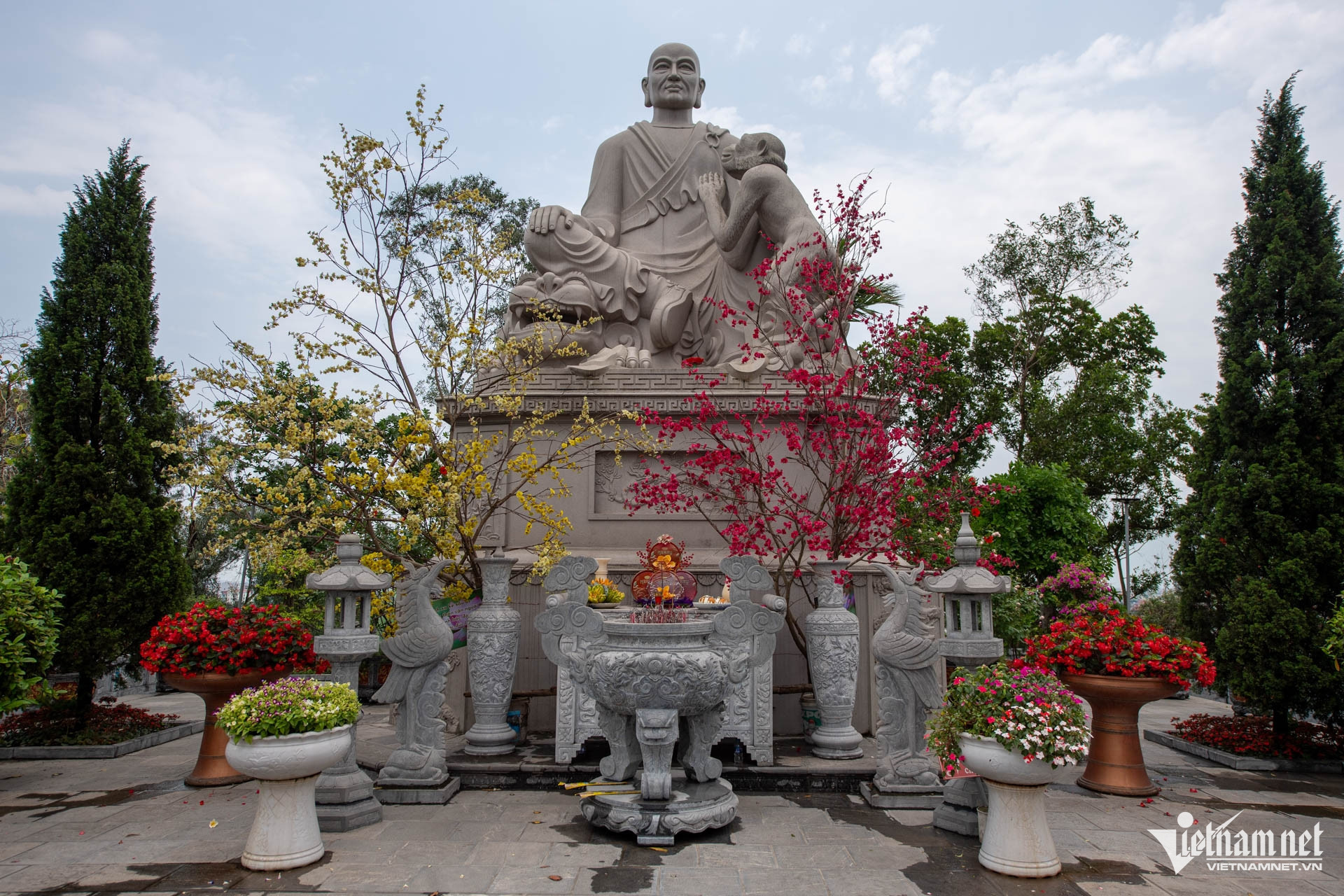
He helped guide King Ly Cong Uan to the throne and played a key role in relocating the capital from Hoa Lu to Thang Long in 1010, shaping the country’s political and cultural future.
Though honored as a royal advisor, Van Hanh shunned fame and riches, choosing instead a monastic life at Tieu Pagoda. His legacy is commemorated annually on the 15th day of the first lunar month, attracting pilgrims nationwide.
On the summit of Tieu Mountain stands a 5-meter-tall statue of Van Hanh, and within the temple grounds lies the “Ly gia linh thach” stele, discovered in 1980 during renovations. This stone monument, carved in 1793 during the Tay Son era, documents the lineage and legacy of King Ly Cong Uan and is a vital artifact for historians.
The temple also preserves 15 ancient stupas marking the final resting places of high-ranking monks, including the Vien Tue Stupa, once home to the preserved body of Zen master Nhu Tri.
The mystery of Zen master Nhu Tri’s body
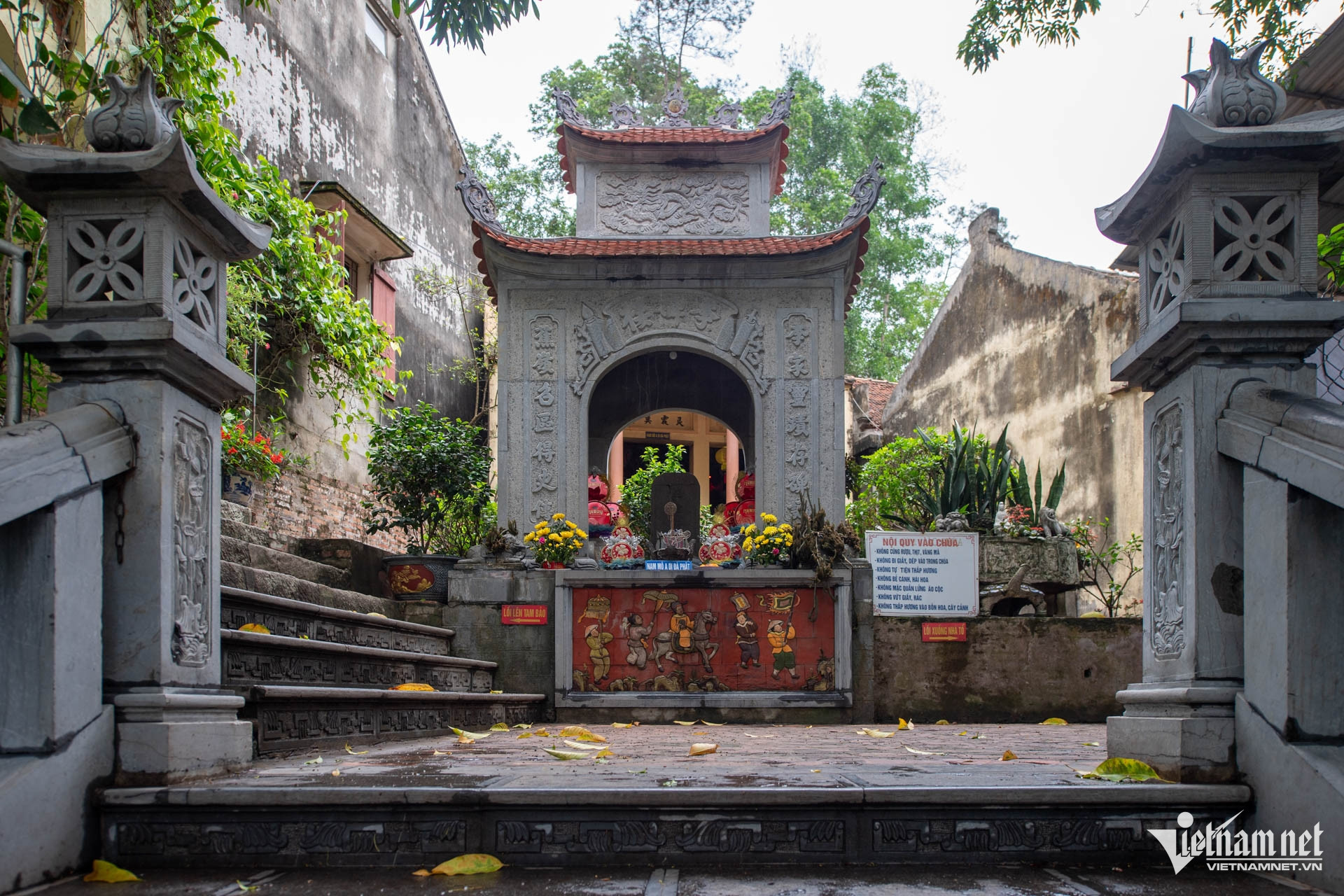
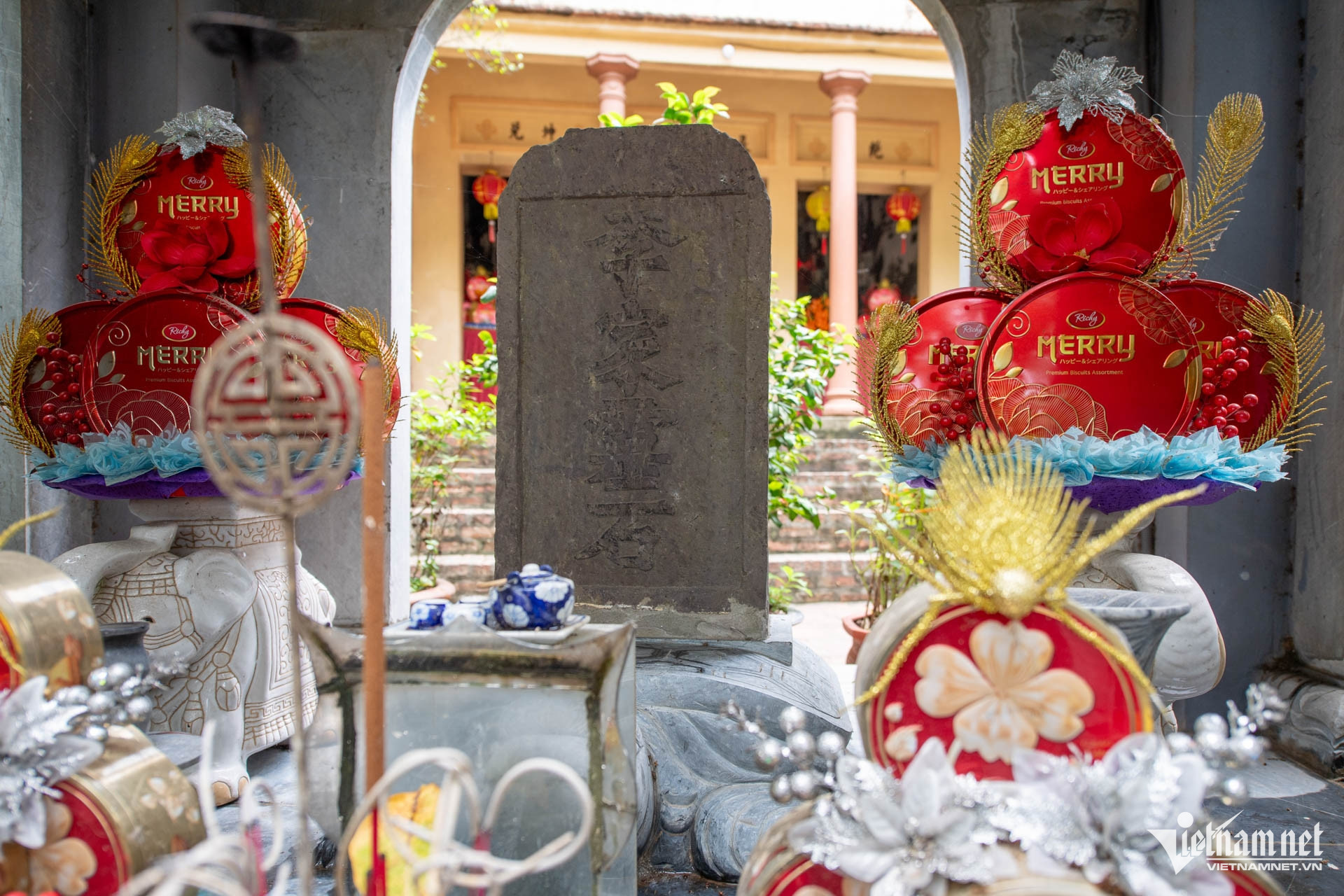
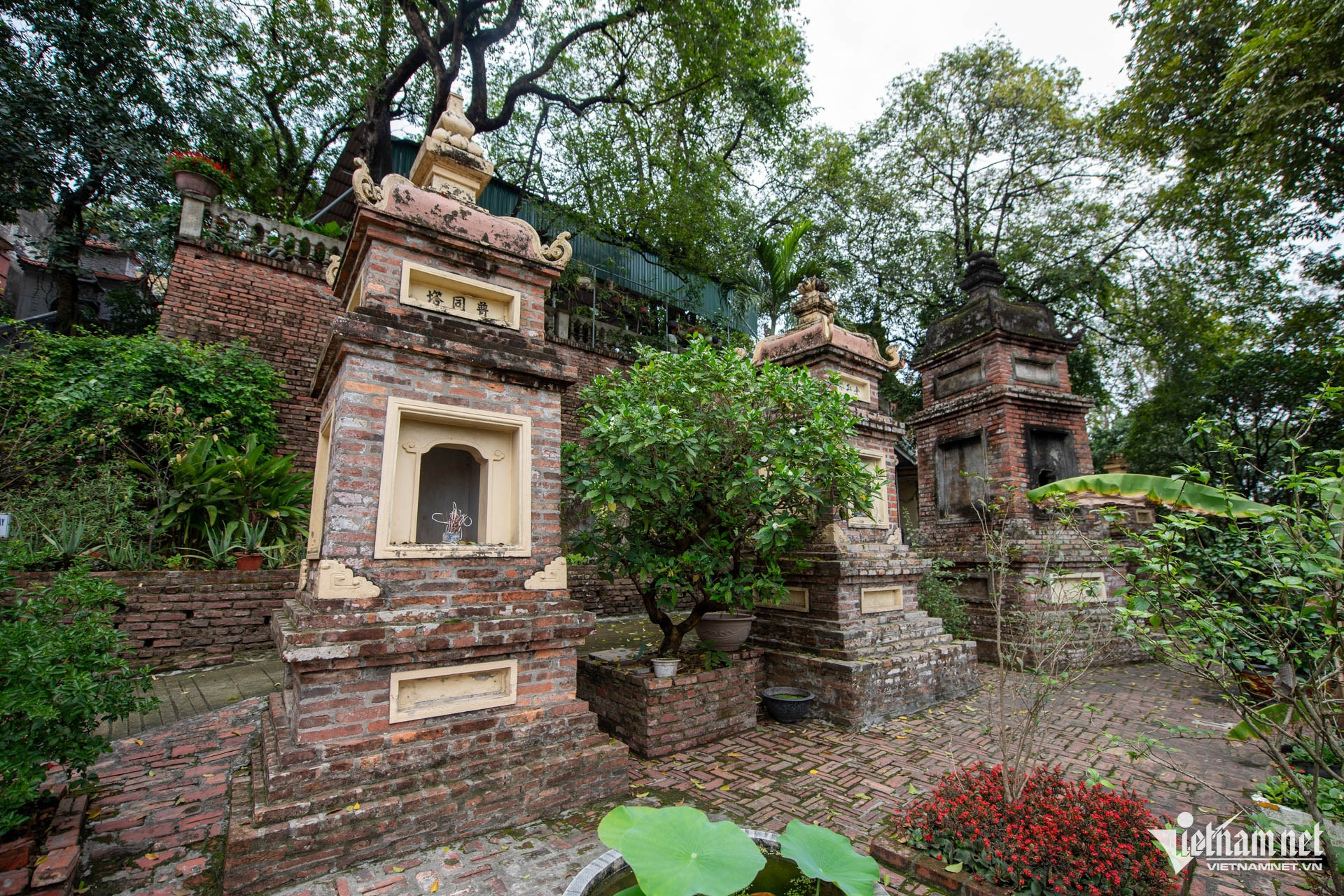
For nearly three centuries, the Vien Tue Stupa silently protected a remarkable secret: the mummified body of Zen master Nhu Tri. In 2004, the sealed chamber was opened before religious leaders and scholars, including a tearful Abbess Dam Chinh.
She recalled witnessing the body at age 17 when visiting with her teacher. “I saw a person seated in meditation inside the stupa, with what looked like a dried bloodstain near his left eye. No one knew who it was. A few days later, the door was sealed again.”
In 1971, while cleaning, she found a brick engraved with: “Master Nhu Tri, passed away in 1723.” The identity of the body was finally confirmed.
In early 2003, Abbess Dam Chinh enlisted the help of senior monks and scholars including Venerable Thich Thanh Tu and Thich Kien Nguyet from Truc Lam Zen Monastery to preserve the relic.

The body was removed from the stupa in 2004. Inside was a serene figure, hands in Samadhi mudra, face calm and radiant, seemingly asleep in nirvana.
“At that time, the body was damp. We had to light candles and spotlights in the stupa from 8 a.m. to 3 p.m. to dry it,” the abbess recalled.
Due to water shortages and large crowds at Tieu Pagoda, the restoration was relocated to Due Khanh Pagoda in Tien Du District. The project, led by late Associate Professor Dr. Nguyen Lan Cuong, lacquer artist Dao Ngoc Han, and experts from the 69 Institute under the President Ho Chi Minh Mausoleum Guard Command, took four months to complete.
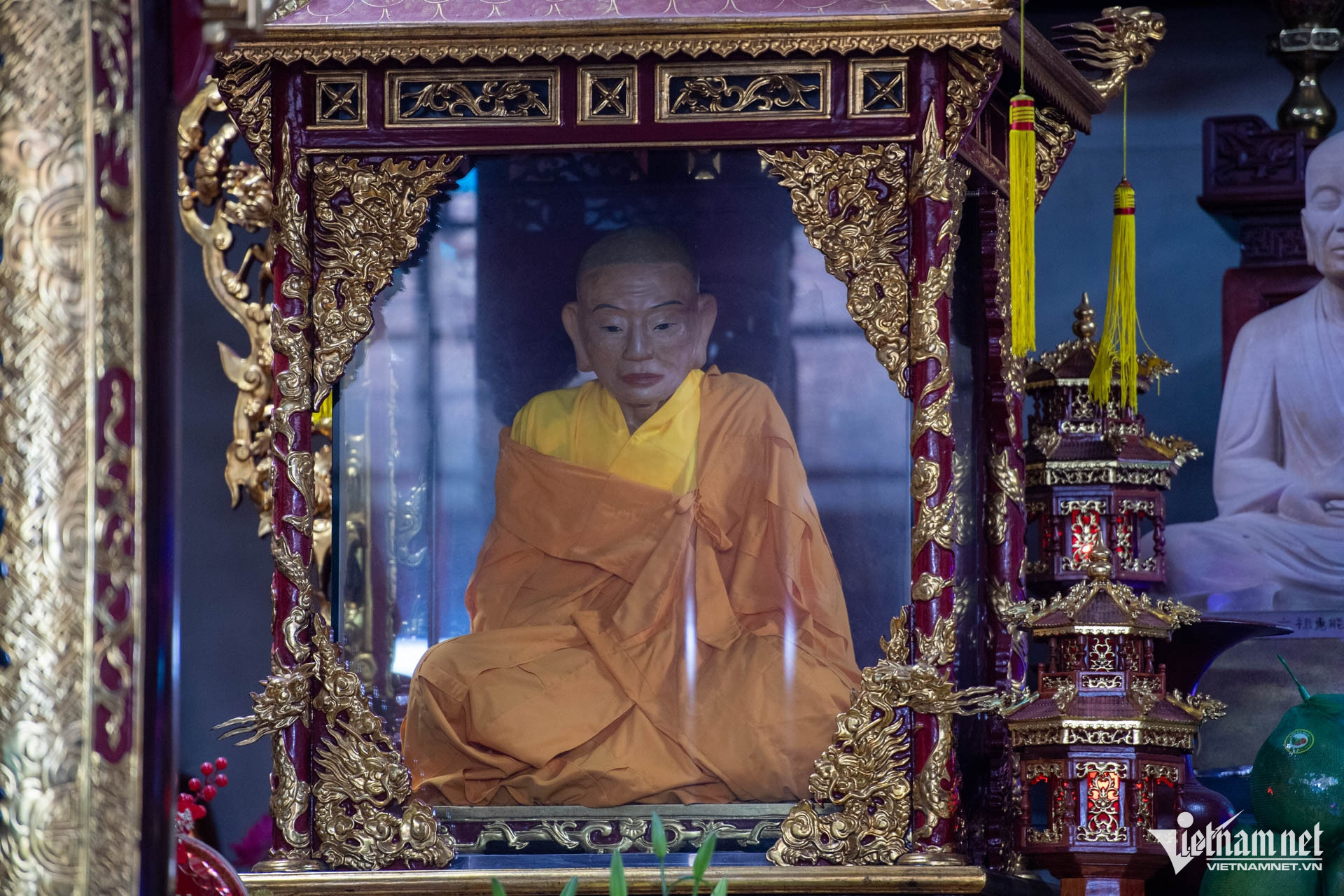
Institutions including the Vietnam Academy of Science and Technology, Bac Ninh General Hospital’s radiology department, and the Vietnam History Museum oversaw the process.
Researchers disinfected the body and found a pomelo-sized mass in the abdomen - believed to be remnants of the internal organs. The master was estimated to have stood 1.65 meters tall and died aged 45–50.
To ensure longevity, the entire body was covered in silver leaf. A prayer ceremony was held at Due Khanh Pagoda on September 27, 2004, before the body was returned to Tieu Pagoda.
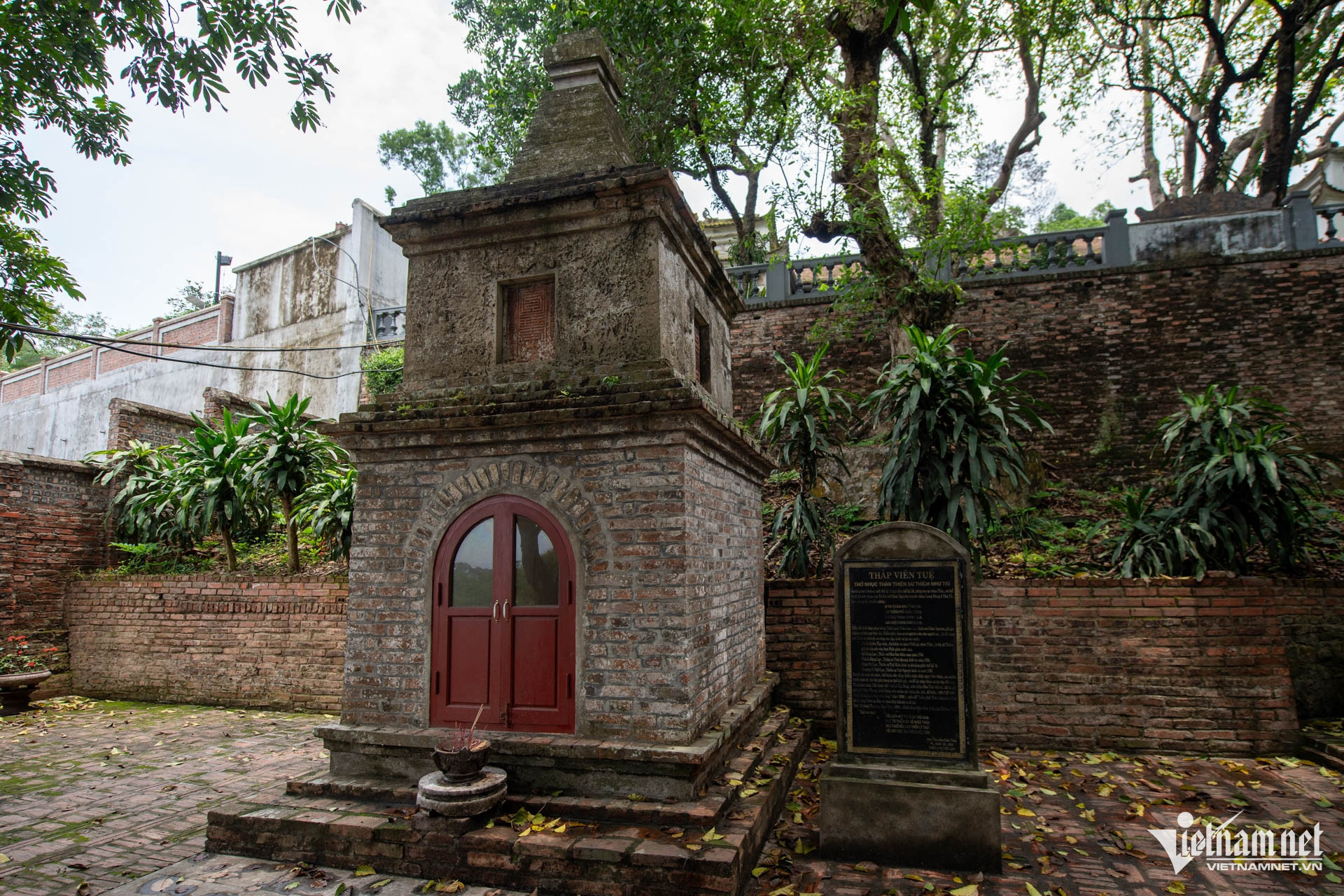
The master is now enshrined in a glass case in the ancestral house. A composite replica is placed back in the Vien Tue Stupa for public worship. To prevent condensation, a nitrogen air system was installed to keep the display pristine for over two decades.
In the echoing chime of Tieu Pagoda’s bell, pilgrims bow in quiet reverence to the Zen masters whose legacy endures - especially that of Nhu Tri, disciple of Zen master Chan Nguyen and a key figure in reviving the Truc Lam Yen Tu Zen lineage. He also contributed to engraving Thien Uyen Tap Anh, an essential Buddhist text of Vietnam.
Linh Trang